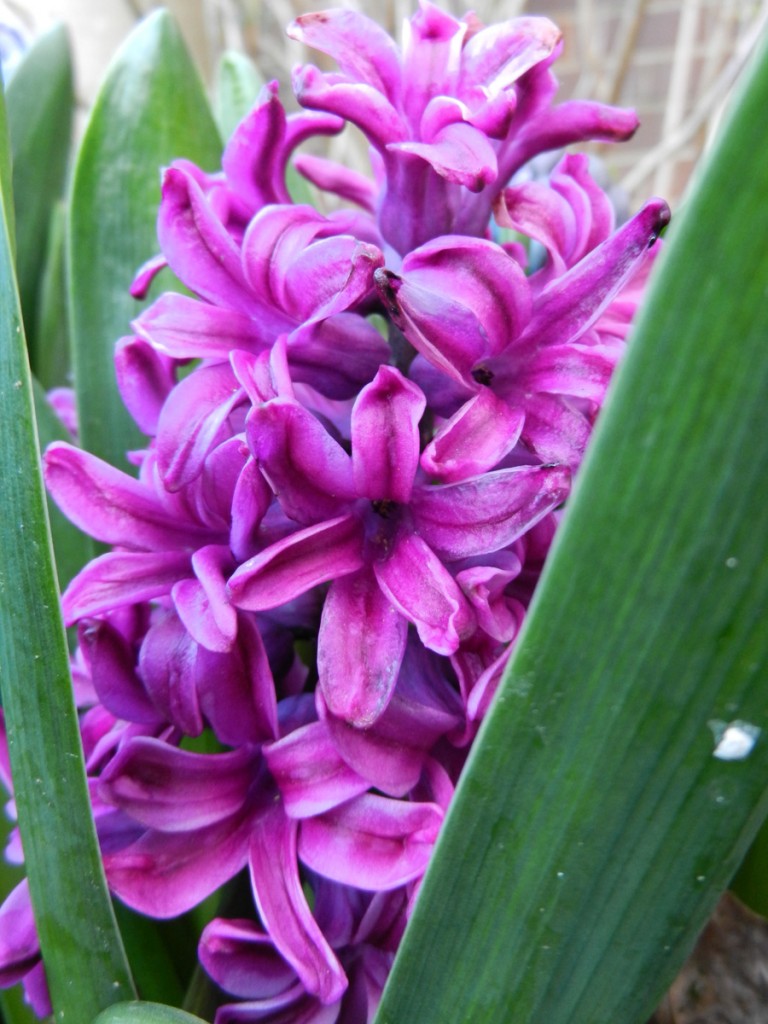 Hyacinths are beautiful, showy flowering bulbs that can be grown in pots, in the garden and even in vases indoors. They are heavy feeders, and require lots of TLC after they finish flowering. They store up their energy for the next year’s growing period after they flower, while their leaves are green. This is a good time to fertilise and water. Hyacinths come in a range of colours including pale pink, blue and purple. They are fine in an area with filtered sunlight, so suit planting under deciduous trees. Hyacinths are an early flowering spring bulb. They can be planted closely or interspersed with other flowing bulbs for a prolonged colour display. As well as looking good, they have a beautiful fragrance- all the more reason to grow them in pots that can be displayed inside or in high traffic areas
Hyacinths are beautiful, showy flowering bulbs that can be grown in pots, in the garden and even in vases indoors. They are heavy feeders, and require lots of TLC after they finish flowering. They store up their energy for the next year’s growing period after they flower, while their leaves are green. This is a good time to fertilise and water. Hyacinths come in a range of colours including pale pink, blue and purple. They are fine in an area with filtered sunlight, so suit planting under deciduous trees. Hyacinths are an early flowering spring bulb. They can be planted closely or interspersed with other flowing bulbs for a prolonged colour display. As well as looking good, they have a beautiful fragrance- all the more reason to grow them in pots that can be displayed inside or in high traffic areas
Hyacinths are fussy flowers in my growing zone. Suburban Sydney really doesn’t get frost, let alone snow, and these flowers require adequate chill time to bloom reliably. So I need to regularly dig them up for storage over their dormant period. Once the leaves have turned brown, I gently dig up the bulbs using a hand spade. Shake off excess soil, and leave to dry in the shade for a few days. Brush them off, cut off any attached leaves and store them in a cool, dry, dark place over the dormancy period. In the last month of autumn, I store them in the fridge for a few weeks, then plant out into final growing position. The time in the chiller helps them know that “winter” is upon them, and seems to motivate them to flower sooner.
Propagation
Hyacinth flowers, when left on the plant after flowering, develop seeds that resemble mini bulbs. These can be planted, but can be unreliable. They also develop “baby” bulbs from the mother bulb. Leave these attached if you dig the bulbs up, and they will form small hyacinths the following season.
